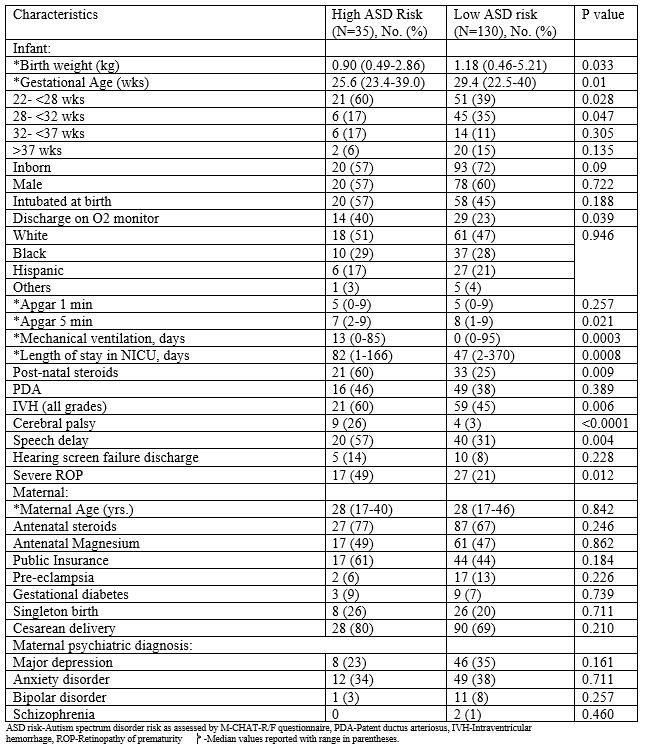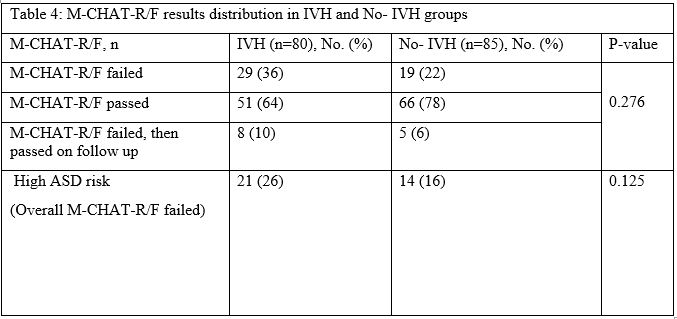General Pediatrics: Primary Care/Prevention
General Pediatrics 7
311 - Evaluation of Autism Spectrum Disorder Risk in Infants with Intraventricular Hemorrhage
Publication Number: 311.408

irfan Shehzad, MD
Fellow
Baylor Scott White McLane Children's Medical Center
Temple, Texas, United States
Presenting Author(s)
Background: Various prenatal, perinatal and postnatal factors are associated with autism spectrum disorder (ASD). Mixed findings are reported in relation to intracranial hemorrhage, with some studies finding it as significant predictors and others noting no association to ASD.
Objective:
The aim of this study is to evaluate the ASD risk in infants with intraventricular hemorrhage (IVH) using the screening tool, Modified Checklist for Autism in Toddlers-Revised with Follow Up (M-CHAT-R/F).
Design/Methods:
This is a retrospective cohort study of infants admitted to the Baylor Scott & White Health NICU at Temple, TX from January 2014 through June 2020. 80 infants with IVH were eligible and 85 infants with no IVH were compared against i.e. 165 infants admitted to NICU and with M-CHAT scores available were identified. At 16 to 30 months of chronological age in primary care clinic, children were assessed using M-CHAT-R/F questionnaire for ASD risk. Cranial ultrasound (CUS) findings at 36 weeks PMA or NICU discharge were also used to determine the ASD risk.
Results:
M-CHAT-R/F screening results were found in 165 infants, out of those, 35 infants failed M-CHAT-R/F (High ASD risk) and 130 infants passed M-CHAT-R/F (Low ASD risk). Median birth weight and gestational age were significantly lower in the High ASD risk group compared to Low ASD risk group. High ASD risk and cerebral palsy were significantly associated with severe IVH. ASD risk was almost 2 times higher in the severe IVH group when controlled for both birth weight and gestational age. Based on 36 weeks PMA or discharge CUS findings, ASD risk of infants with resolved IVH was comparable to No-IVH group. Although non-significant, infants with periventricular leukomalacia had 3 times and those with hydrocephalus needing VP shunt had almost 5 times the risk of ASD.
Conclusion(s): Infants with IVH have an overall elevated risk of ASD. The ASD risk increases with lower gestational age, lower birth weight and severe IVH. This study emphasizes the importance of timely screening and supports providers in counselling the parents on risk of ASD in infants with severe IVH. 
.jpg)

